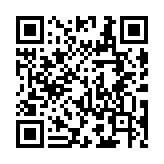strings.FindRESubmatch
Syntax
Returns
Alias
By default, findRESubmatch finds all matches. You can limit the number of matches with an optional LIMIT argument. A return value of nil indicates no match.
When specifying the regular expression, use a raw string literal (backticks) instead of an interpreted string literal (double quotes) to simplify the syntax. With an interpreted string literal you must escape backslashes.
Go’s regular expression package implements the RE2 syntax. The RE2 syntax is a subset of that accepted by PCRE, roughly speaking, and with various caveats. Note that the RE2 \C escape sequence is not supported.
Demonstrative examples
{{ findRESubmatch `a(x*)b` "-ab-" }} → [["ab" ""]]
{{ findRESubmatch `a(x*)b` "-axxb-" }} → [["axxb" "xx"]]
{{ findRESubmatch `a(x*)b` "-ab-axb-" }} → [["ab" ""] ["axb" "x"]]
{{ findRESubmatch `a(x*)b` "-axxb-ab-" }} → [["axxb" "xx"] ["ab" ""]]
{{ findRESubmatch `a(x*)b` "-axxb-ab-" 1 }} → [["axxb" "xx"]]Practical example
This Markdown:
- [Example](https://example.org)
- [Hugo](https://gohugo.io)Produces this HTML:
<ul>
<li><a href="https://example.org">Example</a></li>
<li><a href="https://gohugo.io">Hugo</a></li>
</ul>To match the anchor elements, capturing the link destination and text:
{{ $regex := `<a\s*href="(.+?)">(.+?)</a>` }}
{{ $matches := findRESubmatch $regex .Content }}Viewed as JSON, the data structure of $matches in the code above is:
[
[
"<a href=\"https://example.org\"></a>Example</a>",
"https://example.org",
"Example"
],
[
"<a href=\"https://gohugo.io\">Hugo</a>",
"https://gohugo.io",
"Hugo"
]
]To render the href attributes:
{{ range $matches }}
{{ index . 1 }}
{{ end }}Result:
https://example.org
https://gohugo.ioYou can write and test your regular expression using regex101.com. Be sure to select the Go flavor before you begin.
